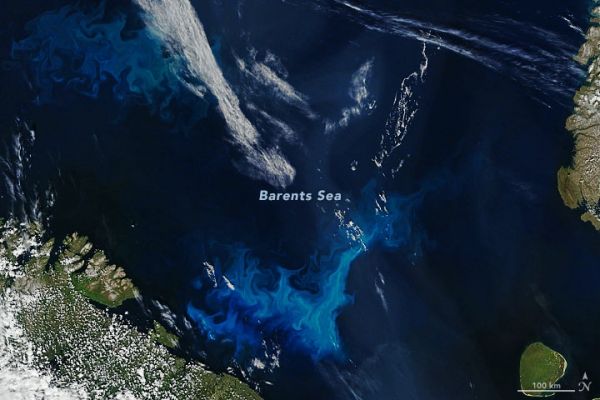Each summer, parts of the Arctic Ocean and peripheral seas lose their ice cover and bathe in ample sunlight. In this window of time, some of these open-water areas come to life with phytoplankton blooms so large and vivid they can be seen from space.
The summer of 2020 has been one of those summers. Phytoplankton—the floating plant-like organisms that, like plants on land, need sunlight and nutrients to thrive—have exploded in numbers, or “bloomed,” across ice-free northern latitudes. The image above, acquired on July 26 with the Moderate Resolution Imaging Spectroradiometer (MODIS) on NASA’s Terra and Aqua satellites, shows a bloom of phytoplankton in the Barents Sea, north of Scandinavia and Russia.
In the Barents Sea, blooms that show up in spring and early summer are typically composed of diatoms—a microscopic form of algae with silica shells and ample chlorophyll, which makes them appear green in satellite images.
Continue reading at NASA Earth Observatory
Image via NASA Earth Observatory


